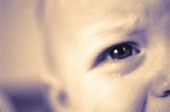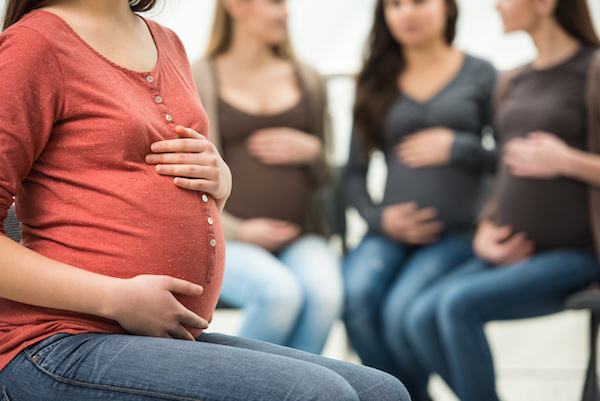
TUESDAY, April 16 (HealthDay News) — Although colic has always been considered a gastrointestinal illness, new research suggests that migraines might be to blame.
The study, published April 17 in the Journal of the American Medical Association, found the odds were nearly seven times higher that children with migraine were colicky babies than were not.
“It is already known that migraine can show with intestinal pain in childhood,” said study senior author Dr. Luigi Titomanlio, head of the pediatric migraine and neurovascular diseases clinic at APHP Hospital Robert Debre in Paris, France. That is termed abdominal migraine.
“Our results suggest that infantile colic could represent a form of migraine with age-specific expression,” Titomanlio said.
As a colicky child gets older, be aware that he or she may be more likely to have migraine headaches, he added. “By extrapolation [from the study’s findings], having had colic could be a risk factor of migraine in teens with recurrent headaches,” said Titomanlio.
Colic affects as many as one in five infants, according to the U.S. National Library of Medicine. Babies with colic cry for more than three hours a day, usually at the same time each day, at least three days a week. The exact cause of infant colic is unknown, but it usually gets better by 12 weeks of age.
When babies with colic are crying, their abdomens often appear swollen and they may draw their legs up to their bellies. These symptoms appear to originate in the digestive tract, but treatments aimed at easing digestive system symptoms aren’t very effective at making babies with colic calm down.
Migraine is a common cause of headaches in children, according to the study. Another type of headache in children is a tension-type headache, and children who have tension-type headaches are believed to have increased pain sensitivity. Links between these and other types of headaches and colic have been suggested, but they haven’t been well-studied, the researchers noted.
This latest research includes more than 200 children 6 to 18 years old who were diagnosed with migraine headaches. The study also included 120 children who had tension-type headaches, and 471 control children who were treated for minor traumas.
The researchers found that nearly 73 percent of children who had migraines also had colic as babies, while just 26.5 percent of those without migraine reported colic. Slightly more children who had migraine without aura (without visual and other sensory disturbances) reported having had colic than those who had migraine with aura. Overall, the odds that someone with a migraine had colic as a child were 6.6 times higher than the odds they didn’t have colic, the study found.
The researchers didn’t find an association between tension-type headaches and colic.
The mechanism behind the colic-migraine association isn’t clear, and the authors say more research is needed to understand the connection. But Titomanlio said it could be that nerve terminals in the brain and in the gut may be overly sensitized, leading to pain in the head or the gut.
Dr. Phyllis Zee, professor of neurology and director of the sleep disorders center at the Feinberg School of Medicine at Northwestern University in Chicago, said this is the largest study to date showing “a strong association between infantile colic and migraine.” But, she added, this study only found an association; it doesn’t prove that one disorder causes the other.
Zee, the author of an accompanying journal editorial, suspects disrupted sleep cycles may play a role in both disorders, along with disruption in melatonin, a hormone that induces sleep and regulates the body’s internal time clock. While most melatonin is made in the brain, Zee said that some is made by cells in the digestive tract. And the release of melatonin in the digestive system can affect the motility of the intestines, which could theoretically cause some colic symptoms.
“Sleep and circadian rhythm disruptions may be a prominent trigger in colic and in migraine,” she said.
Zee said if a melatonin or sleep-wake cycle disturbance is to blame, parents can take steps to change these factors without drugs.
“Don’t get too much light at night. Try to get more light during the day. Take the baby outside during the day, and at night, have a sleep environment that’s darker,” she suggested.
If your baby’s colicky time is at night, try to avoid bright lights or stimulating sounds, such as from the TV. And don’t bounce the baby around too much, she said.
More information
Learn more about colic from the U.S. National Library of Medicine.

